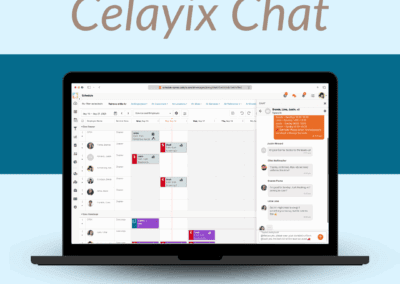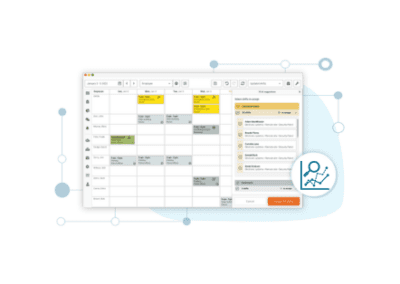Does your company place value on the employee offboarding process? When was the last time you looked at your offboarding process? Oftentimes, employers overlook this and deem it not important.
Unfortunately, a whopping 71% of organizations have no formal offboarding process! Companies use resources to develop employee onboarding processes but not as much on the offboarding part. Make sure that when your employees leave your company, the process is smooth. This will help improve your company’s reputation and the experience of the employees.
In this blog post, we dive into how to develop an employee offboarding process. Read on to find out more!
What is employee offboarding? 
You’ve more than likely heard of employee onboarding. This is when a new employee joins your company and the HR department has a set process of bringing them up to speed with their responsibilities, company culture, and other knowledge resources they need to know to be successful in their role. Companies spend a lot of money on this process. In fact, according to SHRM, the average cost of onboarding is around $4,100 per new hire!
Contrastingly, offboarding is the process when an employee decides to leave the company. It encompasses all the steps necessary to allow them to leave the company following their resignation or termination.
Why is employee offboarding important?
Offboarding ensures a positive employee experience until the very end of the employee lifecycle.
1. Improves employer reputation
An effective offboarding process will ultimately improve your reputation as an employer. When your staff member leaves the company they will either be an advocate for the company or the opposite. By having a strong process in place you can ensure that employees exit the company with a positive attitude towards you. This will encourage them to speak highly of the company and hopefully recommend it as a good employment opportunity.
2. Knowledge Transfer
An effective offboarding process generally provides structure for departing employees to pass on their company knowledge and responsibilities to remaining and future employees. One of the largest losses to organizations during employee turnover is knowledge – a 2018 study estimated that “the average US business loses $47 million in productivity each year due to inefficient knowledge sharing.”
3. Improves employee experience 
The employee experience starts with the recruitment process and ends with the offboarding process. Maintaining a positive experience when someone leaves means there are no hard feelings between employer and employee. It also gives a good impression to other remaining team members in the organization.
4. Companies can improve through feedback
During the exit process, you can gather feedback as to why the person is leaving and work to improve on these areas. Are most of your workers leaving because of a manager or because they don’t see career progression? You can take the results from exit interviews and put work in to improve for your current staff. This shows your team you care about what they think and will increase employee engagement.
5. Mitigate security risks
If the necessary precautions aren’t put in place, disgruntled staff members may take an opportunity to cause harm to the business or business items. For example,you should revoke access to company social accounts and other private company information. You want to ensure you have steps in place so information can’t get shared with your competitors. You also want to ensure that you get any company property back from them e.g. company phones, laptops, etc.
6. Legal & Compliance
There can be lots of red tape when it comes to offboarding employees. An effective offboarding process helps ensure that all legal and contractual obligations related to termination, when that is the reason for offboarding. Things like final pay, benefits, and return of company property should be looked after, in order to minimise legal risks!
7. Potential Rehire
Never say never, isn’t that what they say?
A smooth offboarding process leaves the departing employee and the company with a positive lasting impression. Although this is often overlooked, it can be beneficial if the departing party ever considers returning to their role, or the company. Positive experiences also make it more likely that the employee will go on to act as an ambassador for the company in their future opportunities. You never know who they might refer in the future!
How to develop your offboarding process 
The process will be different depending on what industry you are operating in, the size of your business, and the position of the staff member. However, here are some best practices you can put in place to develop your own employee offboarding process.
Create a resignation process:
The resignation process should be outlined in your company handbook. For example, you need to be clear on how someone resigns and how much notice they must give. As soon as a worker gives notice of their resignation it’s important for HR to start the offboarding process immediately.
Make it official:
Ensure the worker gives a signed letter of resignation and the necessary department keeps it on file in case it is needed at a later date. The same applies to a termination; you must ensure you have an official copy of the termination letter given to the staff member. This can save you from any possible litigation that may occur down the line.
Conduct an exit interview:
HR should conduct an exit interview with the employee to gather feedback on their overall experience, the company, their manager, the role, and their reason for leaving. The information shared during this interview should be kept confidential and used to improve areas of the business. This may be the only opportunity you have to speak with them, so make sure an make use of it.
Notify teammates: 
Despite the fact that the employee may have already spoken to colleagues they are close with, you should also let the team know that their team member is leaving and when they are leaving. Have an open discussion as to what the team will look like going forward and what support they need in the meantime while you look for a replacement.
For example, remaining staff may need to take on extra work in the meantime so a plan will need to be put in place to ensure no one is taking on too much.
Let customers/clients know:
This may be only applicable to some companies. However, if your employee is in a customer-facing role it is best practice to let them know that the person they deal with it will be leaving. There may need to be a handover of work made or timelines may need to be pushed out to facilitate replacing the role. You may also need additional time to bring a new person on board and up to speed with any projects.
Handoff of work:
The employee should work with their manager on their work handoff. This looks like making note of all current projects being worked on and all outstanding tasks. They will need to decide what remaining team members will take on the extra work and if there is any additional training involved.
The employee can spend their notice period training other team members if needed. The employee should also save all required documents and files to a shared drive so other team members can pick them up if needed.
Handing back of company property:
This usually happens on the last day the employee works. They will need to return any company-owned property in good condition e.g. laptop, phone, company credit cards, or access cards to buildings. They will want to clear their devices of any personal information so it can be given to their replacement.
Once offboarded, they should clear out their desks of personal belongings and leave it tidy for the next employee. Any company files should be stored away correctly.
Update passwords to accounts accordingly:
If the employee had access to company information accounts like social media accounts, you need to ensure passwords are changed to protect the company against security threats. The IT department will have to deactivate the company email and redirect incoming emails to a new point of contact.
Prepare for outstanding payment/compensation:
The payroll department needs to be notified that an employee is leaving so they can review any outstanding payment or compensation owed to the employee. For example, tax information, final paycheck, or benefit payments.
Finally, Leave a good impression: 
The final step is to ensure you and the employee are leaving on good terms. You never know if an employee may want to return to work for the company sometime in the future. Let the employee know you value all the work they’ve done while with the company. You can also send a company-wide email letting everyone know of the employee’s departure so other colleagues can have a chance to say their goodbye.
Many companies will buy the leaving employee a farewell gift as a token of appreciation or a signed card by everyone in the office. It’s the small touches that your leaving employee will remember and appreciate.
Employee’s leaving your organization is not easy for the company or the employee. An employee offboarding process means that your employees leave the business with a positive impression of the business. A smooth leaving process can let your team members become advocates for your company at the very last stage of the employee life cycle.









